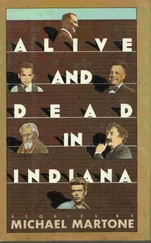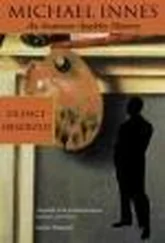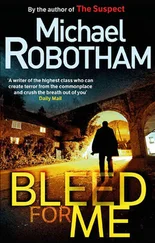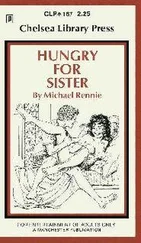WING
Outside now, a second jet, dark blue and close enough to the ground I can see the gold trim and the gold number 2 in Helvetica painted on the outside port surface of the port vertical stabilizer, and the jet is so close to the ground (I have gone outside now, and I don't think the voices on the phone know I have, but they can't help but hear the screaming of the jets as they vector back and forth over the neighborhood doing a maneuver they call an opposing knife's edge) that I can see the rudder flexing, and the control surface that is the whole horizontal stabilizer digs into the air, ricocheting the jet up up up, and then the afterburners kick on and through that roar I hear the second question which is what is the difference between fact and fiction? and I am preparing to answer that one with my frequently answered answer about how a fact is a thing done and a fiction is a thing made so that even the most real thing, after it is done, has no reality, and how even the most made-up thing, when it is made up, has a reality — the reality of a book, say, of words on paper, a transcript you can hold, manipulate — when the two jets meeting at the apex of the loop they have both been pulling begin to emit a dark blue smoke that I will learn later is a paraffin-based solid vaporized by the flame in the engines, and the punctuation of the smoke, a kind of cursive wave, is already drifting to the north as the planes (one tucked under the wing of the other) disappear over the horizon toward Mississippi.
FAT ALBERT
The sound, too, of the two jets is drifting away, though it seems (when you do hear anything) the sound is always trailing way behind the jet that is actually making the sound, or, even stranger, the echoes from some other run-by are running ahead of the jet, reverberating, coming to meet the jet as it dives toward the ground, and the sound is bouncing off the ground up to meet it, a kind of stutter or shriek, and the students on the phone ask me if I think teaching has affected my writing, and they can actually hear through the phone the sound of the jets bouncing off the sky and the ground and the trees and the river and the houses, and I give them an answer about how writing isn't like the other subjects of the university, how it is more like a gift that runs through us all, both students and teachers, that what is received must be given away, that art is erotic property, property that stays in motion when, suddenly, a huge blue C-130 cargo airplane, the one the Blue Angels named Fat Albert, rises up behind my house, as if it were a big balloon floating up, almost nicking the top of the longleaf pines in my neighbor's backyard, its four turboprops digging into the humid air as it lumbers so slowly; it is so slow, especially after the blinking speed of the jets, that it doesn't seem to have enough oomph to remain aloft, always already about to fall, as it is more like a blimp, a zeppelin, wallowing now right overhead as it rolls port, showing me its belly like a whale sounding and stalling, sliding backward, it seems, but then splashing forward, a graceful awkwardness out of the water, over the golf course, its overstuffed rounded and rounding organic shadow casting on the organic cutouts of the greens and bunkers and ponds, and the plane shakes, straining to find an inch of lift, and hunkering down to gain momentum, and then seeming to levitate, wagging its tail and launching, like a navy-blue cetaceous cumulus cloud, shading, now blotting out the bloated sun.
SLOT
The jets are back as the intermission clown car of the cargo plane settles down for a landing on the other side of the river, and the jets — there are four of them now — in their famous formation of four, emerge from behind a cloud, diamond-shaped, the fourth airplane in the slot beneath and behind the lead plane that's wingtip-to-wingtip with his two wingmen's wingtips, but that is hard to see, hard to say, because what is behind or below or above changes instantly effortlessly constantly, it seems, as the planes move through the delta-v of this calculus, rearranging themselves in each dimension — x, y, z, and time — and from this distance, it looks as if there is just one plane instead of four, so precise is the handling as the “they“ that is really an “it“ roll and pitch and yaw as one, and the students have all been talking to me on the other end of the phone, asking their last question, saying this question coming now at me at the speed of sound, at the speed of light, is their last question, and it is this: would I consider publishing something online, as their magazine Pendulum is published online, and would I send them something to publish? and with the four blue jets up in the blue-going-to-white sky, their manufactured blue smoke spilling from them, another signature, with serifs and accents and underlines, I tell the students that I am working on a book of fictions made up of things made up of fours — the four chambers of the heart, the four seasons, the four humors, the four winds, etc., etc., etc., etc., and I am working on something now I will try to finish and send to them to consider putting in the magazine, and I am watching the formation reposition itself into what I will learn later is called a Double Farvel, with two of the four planes inverted, creating a mirrored image of each other, before they break apart once again, corkscrewing through the air, vectoring to each corner of the sky, reining in their speeds, then raising their noses at an extreme angle to almost stall, and then extending their gear, banking, and heading for the airport over the river, and I tell the students that the Blue Angels seem to be finished for the day, and the pilots of the F/A 18s will now attempt what they call a “landing“ on land but that they usually “land“ at sea, on an aircraft carrier (they are Navy planes, after all, and the pilots are not pilots because in the Navy a pilot is someone who pilots a ship not an airship, so these pilots are naval aviators), and they are about to land on land and not on the deck of a ship with a tail hook and arresting cables, the ungainly and suddenly ungraceful difficult ending to what has been all effortless and elegant, the falling, gliding, silence, all taken back with a vengeance, in the final maneuver called, simply, a controlled crash, the only true answer without question…gravity.
MOOSH
I see him goggled with his glasses, sitting in the sitting room, the space that is the split-level of the split-level, between the upstairs and downstairs, where he has come to live with my Aunt Mad and her family, blind by then. He shaves by feel and misses patches of whiskers on his cheek or leaves swaths of stubble on purpose. He grabs my hand to skin his skin. “Moosh,“ he says, and “Moosh“ again, sands my hand. His eyes, magnified, run behind the useless lenses of his useless eyes. I see the scum of the cataracts, enlarged by the glasses' lenses, mica veneers, a cloudy wax beneath the waxy glass. The right eye blinded outright, a spring sprung from a couch long ago — a darkness penetrating, spiraling into the aperture of the iris — as he moved furniture at the Hotel Indiana where he was a custodian of cushions, a janitor of the terrazzo. The whites of his runny eyes are nougat. They, the eyes, weep as if they've forgotten that they are weeping, more a welling leak that tears and tears. “Moosh,“ he says and says again, those double Os scooping out the sight for the sound. At Grandma's wake, years before, no one saw him disappear. I found him later in the basement of the old house — the basement dug out for the dirt to be used in the backyard garden — lost in the dark, trapped in what had been the coal bin once and now was the root cellar seamed with sacks of seed potatoes gone bad, their eyes sprouting a pulpy fur of fingers.
Читать дальше












